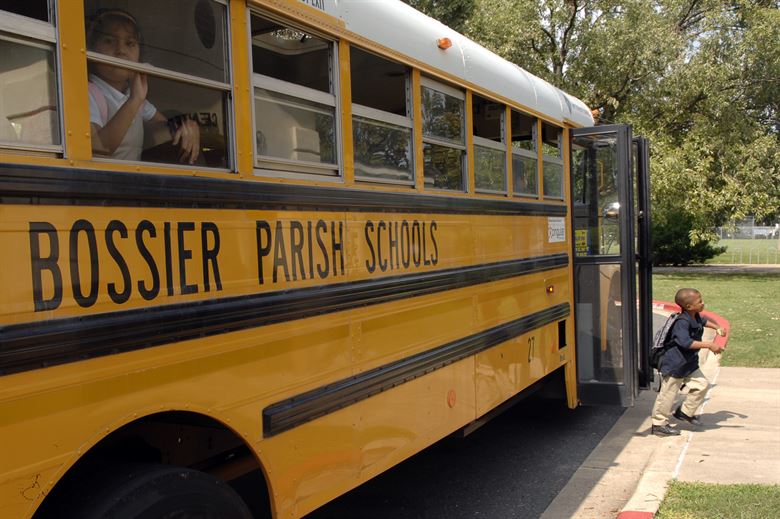School Travel Manager has been helping transport companies, schools and parents to make the school bus run for children as safe as possible. But no matter how sophisticated our software and state-of-the-art safety features are, there is still the human element to consider.
Recently the National Highway Traffic Safety Administration released valuable information for school bus drivers about loading and unloading children on their buses.
We all know that the job of a school bus driver is not an easy one:
- They have to drive a large vehicle in all types of traffic and weather.
- They have to control the children.
- Consideration must be given to other road users.
- And all this must be done working closely with teachers, school officials, and parents.
The biggest challenge of all this is getting the kids on and off the bus safely.
Statistics
Statistics back up the theory that the most dangerous time for a bus driver and children is loading and unloading.
On average around 33 school-aged children did in bus-related crashes every year. And two-thirds of these fatalities happen outside the bus. And fifty percent of these students killed in bus related incidents are between five and seven years old.
Danger Zones
All drivers should be aware of the Danger Zones surrounding their bus:
- The principal impact point on the bus is the front.
- Most crashes involving school buses happen in clear and good weather.
- In most cases, the fatalities happen by the children’s own bus.
- The driver is responsible for accidents and crashes and will have to carry the incident with them all of their lives.
- The principal danger zones are, 10 feet all around the bus.
Risk Areas
Younger students are most at risk, especially the 5-7 year old group, this is because they are smaller and harder to see, and they are impulsive and inexperienced.
It has been proven the after school run is more dangerous than the moring one as students have been sitting in class all day and are more likely to move about later.
Getting On and Off a School Bus
The general rule is that students should be at the bus stop no more than five minutes before the bus is due. This will minimize the risk of being struck by other vehicles.
- Students should always walk 10 feet in front of the bus, and never behind it.
- Students should always wait at least five giant steps away from the side of the bus.
- Students should immediately move the same distance away from the bus after getting off.
- If a student drops something, he or she must inform the driver but never try to pick it up.
- Students should never run to catch the school bus.
Getting on the Bus
If students have to cross the road to get to the bus stop, drivers should advise them:
- Stay on the side of the road away from the traffic, when the bus stops and the driver signals to them then they can cross.
- Even if the driver signals to them that it is safe to cross, students should always check the traffic themselves.
- All student should board the bus using the handrail.
- Students should move swiftly down the bus whilst it is stationary, and sit down immediately.
Getting Off the Bus
All students should wait until the bus is stopped before attempting to disembark. They should never push or shove their way to the front, and always use the handrails.
All drawstrings, straps and loose clothing should be watched when disembarking so they do not get caught in the door. Students should always glance at the back of the bus before they step off, this will ensure nobody is passing them. Once disembarked, students should move immediately away from the bus.
This safety information is for the benefit of all, and should regularly be related to all drivers and children.
